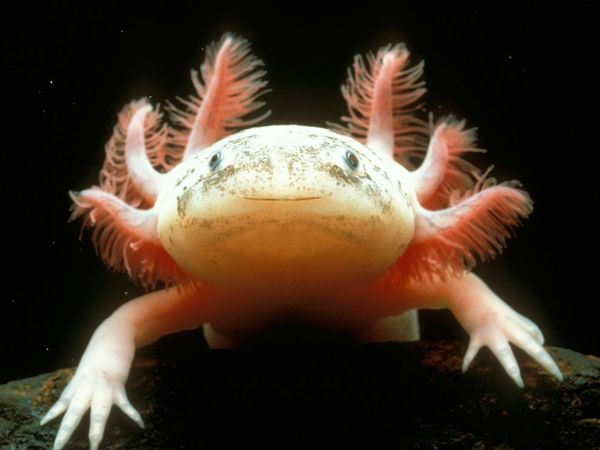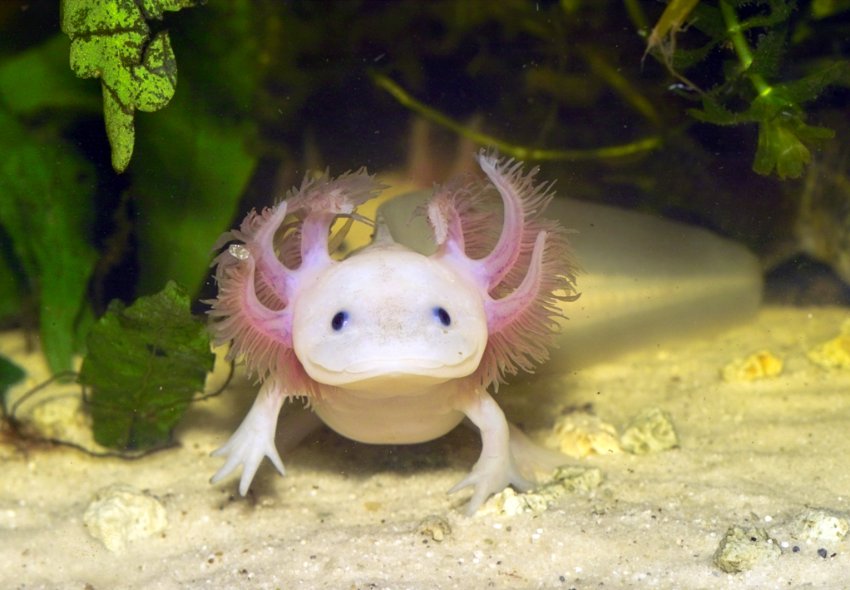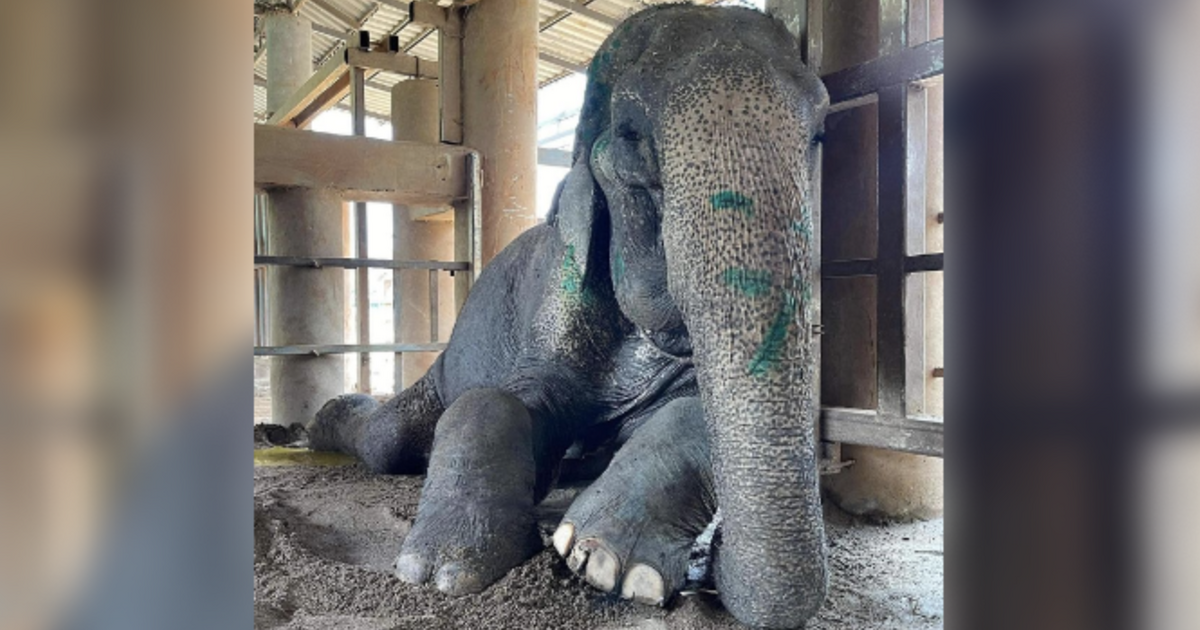

The ghostly looking Mexican axolotl retains some of its larval features for life, including its feathery pink external gills.
Photograph by Stephen Dalton/Animals Animals—Earth Scenes
The Mexican axolotl (pronounced ACK-suh-LAH-tuhl) salamander has the rare trait of retaining its larval features throughout its adult life. This condition, called neoteny, means it keeps its tadpole-like dorsal fin, which runs almost the length of its body, and its feathery external gills, which protrude from the back of its wide head.

Found exclusively in the lake complex of Xochimilco (pronounced SO-chee-MILL-koh) near Mexico City, axolotls differ from most other salamanders in that they live permanently in water. In extremely rare cases, an axolotl will progress to maturity and emerge from the water, but by and large, they are content to stay on the bottom of Xochimilco’s lakes and canals.
Close relatives of the tiger salamander, axolotls can be quite large, reaching up to a foot (30 centimeters) in length, although the average size is closer to half that. They are typically black or mottled brown, but albino and white varieties are somewhat common, particularly among captive specimens.
Axolotls are long-lived, surviving up to 15 years on a diet of mollusks, worms, insect larvae, crustaceans, and some fish. Accustomed to being a top predator in its habitat, this species has begun to suffer from the introduction of large fish into its lake habitat. Natural threats include predatory birds such as herons.
Populations are in decline as the demands of nearby Mexico City have led to the draining and contamination of much of the waters of the Xochimilco Lake complex. They are also popular in the aquarium trade, and roasted axolotl is considered a delicacy in Mexico, further shrinking their numbers. They are considered a critically endangered species.
Share
Share on emailEmail
More »
Other Amphibians
Fast Facts
Type:
Amphibian
Diet:
Carnivore
Average life span in the wild:
10 to 15 years
Size:
Up to 12 in (30 cm)
Weight:
2.11 to 8 oz (60 to 227 g)
Protection status:
Endangered
Did you know?
Because they have the ability to regenerate lost body parts, axolotls are probably one of the most scientifically studied salamanders in the world.








 Photographer Finds Locations Of 1960s Postcards To See How They Look Today, And The Difference Is Unbelievable
Photographer Finds Locations Of 1960s Postcards To See How They Look Today, And The Difference Is Unbelievable  Hij zet 3 IKEA kastjes tegen elkaar aan en maakt dit voor zijn vrouw…Wat een gaaf resultaat!!
Hij zet 3 IKEA kastjes tegen elkaar aan en maakt dit voor zijn vrouw…Wat een gaaf resultaat!!  Scientists Discover 512-Year-Old Shark, Which Would Be The Oldest Living Vertebrate On The Planet
Scientists Discover 512-Year-Old Shark, Which Would Be The Oldest Living Vertebrate On The Planet  Hus til salg er kun 22 kvadratmeter – men vent til du ser det indvendigt
Hus til salg er kun 22 kvadratmeter – men vent til du ser det indvendigt  Nearly Frozen Waves Captured On Camera By Nantucket Photographer
Nearly Frozen Waves Captured On Camera By Nantucket Photographer  It’s Official: Astronomers Have Discovered another Earth
It’s Official: Astronomers Have Discovered another Earth  Meteorite That Recently Fell in Somalia Turns Out to Contain Two Minerals Never Before Seen on Earth
Meteorite That Recently Fell in Somalia Turns Out to Contain Two Minerals Never Before Seen on Earth  Superknepet – så blir snuskiga ugnsformen som ny igen!
Superknepet – så blir snuskiga ugnsformen som ny igen! 
xvpekd